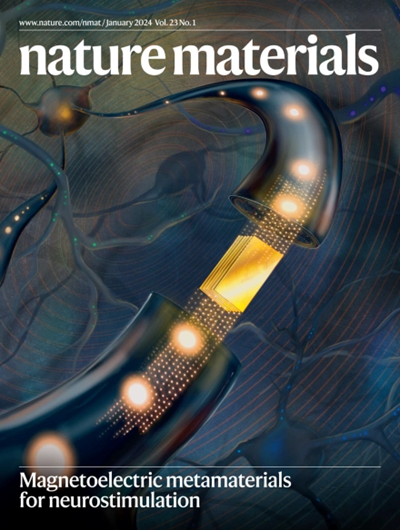Homoepitaxial growth of large-area rhombohedral-stacked MoS2
IF 38.5
1区 材料科学
Q1 CHEMISTRY, PHYSICAL
引用次数: 0
Abstract
Interlayer stacking is an important degree of freedom to tune the properties of two-dimensional materials and offers enormous opportunities for designing functional devices. As a classic example, rhombohedral-stacked (3R) two-dimensional materials exhibit ferroelectricity and optical nonlinearity that are non-existent in naturally abundant hexagonal-stacked (2H) counterparts. However, the ability to grow stacking-controlled large-area films remains challenging due to the thermodynamic competition of different polytypes. Here we report the chemical vapour deposition growth of two-inch wafer-scale 3R-MoS2 films with high phase purity by homoepitaxy on top of a crystalline monolayer MoS2. A defect-promoted nucleation mechanism was proposed, in which Mo-substituted sulfur vacancy is identified as one of the possible defects promoting 3R stacking. We fabricate ferroelectric semiconductor field-effect transistors with 3R-MoS2 channels and demonstrate non-volatile memory characteristics. The control of interlayer stacking is an essential step towards the large-scale production of two-dimensional materials for multifunctional integration. Wafer-scale 3R-MoS2 with high phase purity is achieved through a homoepitaxy strategy, which demonstrates ferroelectricity and holds promise for multifunctional integration.


大面积菱形堆积MoS2的同外延生长
层间堆叠是调整二维材料特性的重要自由度,为设计功能器件提供了巨大的机会。作为一个经典的例子,菱形堆积(3R)二维材料表现出铁电性和光学非线性,这在自然丰富的六边形堆积(2H)中是不存在的。然而,由于不同多型的热力学竞争,生长堆叠控制的大面积薄膜的能力仍然具有挑战性。在这里,我们报道了在单晶二硫化钼上通过同外延的化学气相沉积生长出两英寸的高相纯度晶圆级3r -二硫化钼薄膜。提出了缺陷促进成核机制,其中mo取代的硫空位是促进3R堆积的可能缺陷之一。我们制作了具有3R-MoS2通道的铁电半导体场效应晶体管,并证明了非易失性存储特性。层间堆叠的控制是实现多功能集成二维材料大规模生产的必要步骤。
本文章由计算机程序翻译,如有差异,请以英文原文为准。
求助全文
约1分钟内获得全文
求助全文
来源期刊

Nature Materials
工程技术-材料科学:综合
CiteScore
62.20
自引率
0.70%
发文量
221
审稿时长
3.2 months
期刊介绍:
Nature Materials is a monthly multi-disciplinary journal aimed at bringing together cutting-edge research across the entire spectrum of materials science and engineering. It covers all applied and fundamental aspects of the synthesis/processing, structure/composition, properties, and performance of materials. The journal recognizes that materials research has an increasing impact on classical disciplines such as physics, chemistry, and biology.
Additionally, Nature Materials provides a forum for the development of a common identity among materials scientists and encourages interdisciplinary collaboration. It takes an integrated and balanced approach to all areas of materials research, fostering the exchange of ideas between scientists involved in different disciplines.
Nature Materials is an invaluable resource for scientists in academia and industry who are active in discovering and developing materials and materials-related concepts. It offers engaging and informative papers of exceptional significance and quality, with the aim of influencing the development of society in the future.
 求助内容:
求助内容: 应助结果提醒方式:
应助结果提醒方式:


